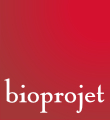
Anaphylactic shock
What is
Anaphylactic shock is a severe, generalised, systemic hypersensitivity (or allergic) reaction which can be life-threatening.
This reaction is characterised by sudden-onset upper or lower airway and/or cardiovascular involvement and is potentially fatal.
Continue reading
It occurs from a few minutes to a few hours after contact with an allergen (food, drug, Hymenoptera stings such as wasp, bee, hornet).
This reaction is characterised by general malaise. It often starts with urticaria-type erythema (itching, giant urticaria, facial swelling), and respiratory destress associated with laryngeal or bronchial oedema. The next stage involves a drop in blood pressure with tachycardia within minutes of contact with the allergen. Gastrointestinal disturbances (nausea, vomiting, diarrhoea, abdominal pain, etc.) may also occur.
Anaphylactic shock is the most severe and serious manifestation of allergy. It represents a medical emergency and is life-threatening in the short-term.
A unique symptom:
Quincke’s oedema
Quincke’s oedema is a severe form of allergy. It is characterised by facial oedema, especially affecting the eyelids and lips, associated with a sensation of heat.
The onset of itching of the pharynx, voice changes and inspiratory breathing difficulties are manifestations of the pharyngeal-laryngeal involvement and the imminent risk of breathing difficulties. The oedema can affect other parts of the body. It can be isolated or associated with an urticaria attack.
Aetiology
General aspects – pathophysiology
The major risk of anaphylactic shock is due to the cardiac and respiratory complications. The drop in blood pressure can lead to loss of consciousness or even a cardiac arrest. These symptoms are increased in the event of associated respiratory involvement (asthma).
List of allergens responsible for anaphylactic shock
The substances that can be held responsible for severe manifestations of immediate hypersensitivity are as follows:
General anaesthetics and certain forms of curare
Hymenoptera stings (bees, wasps, hornets)
Nuts: peanuts, walnuts, hazelnuts, etc.
Painkillers: aspirin, lidocaine, morphine derivatives
Injectable iodine contrast media
Antibiotics, particularly penicillins
But also latex, foods (fish, shellfish, egg, milk, cold meats, etc.), plasma volume expanders, ACE inhibitors, etc.
Management
Immediate management
As soon as the symptoms are recognised, an ambulance must be called (dial 15).
If the patient is known to be allergic, a dose of adrenaline must be injected. This comes in the form of an easy-to-use auto-injector pen.
The pen must be held in the dominant hand, then the needle and injection trigger button covers must be removed. The injection must be made into the thigh muscle, directly or through clothing. The pen must be held in place for ten seconds. The injection site must then be rubbed.
In certain cases, if the symptoms do not improve, a second injection is necessary. It can be given 5-10 minutes after the first.
Medical management
Adrenaline is the cornerstone of the treatment of anaphylactic shock! All patients having had a severe allergic reaction must always carry two adrenaline auto-injector pens with them.
The management of anaphylaxis is not limited to the treatment of the acute episode. It is essential to call 15 or 112 after the intramuscular adrenaline injection to be taken to the emergency department where the risk of a biphasic reaction can be anticipated (recurrence of symptoms). It is essential that the patient be referred to an allergist. This is ideally done in the context of organised pathways with an appointment being made before the patient leaves the emergency department. This work-up allows for the immunological mechanism responsible to be identified, the trigger factor, and for the risk of cross-reactivity to be assessed, as well as individual risk factors and the risk of recurrence. Individual management is then put in place. Preventive measures and therapeutic education are given. It may also be possible to refute the diagnosis of allergy and allow the patient to start consuming certain drugs or foods again.
Patient education
Anyone having suffered from anaphylactic shock must be referred to an allergy department and trained on the use of an auto-injector pen to be carried with them at all times (two pens). The patient must also have a letter listing their allergies.


